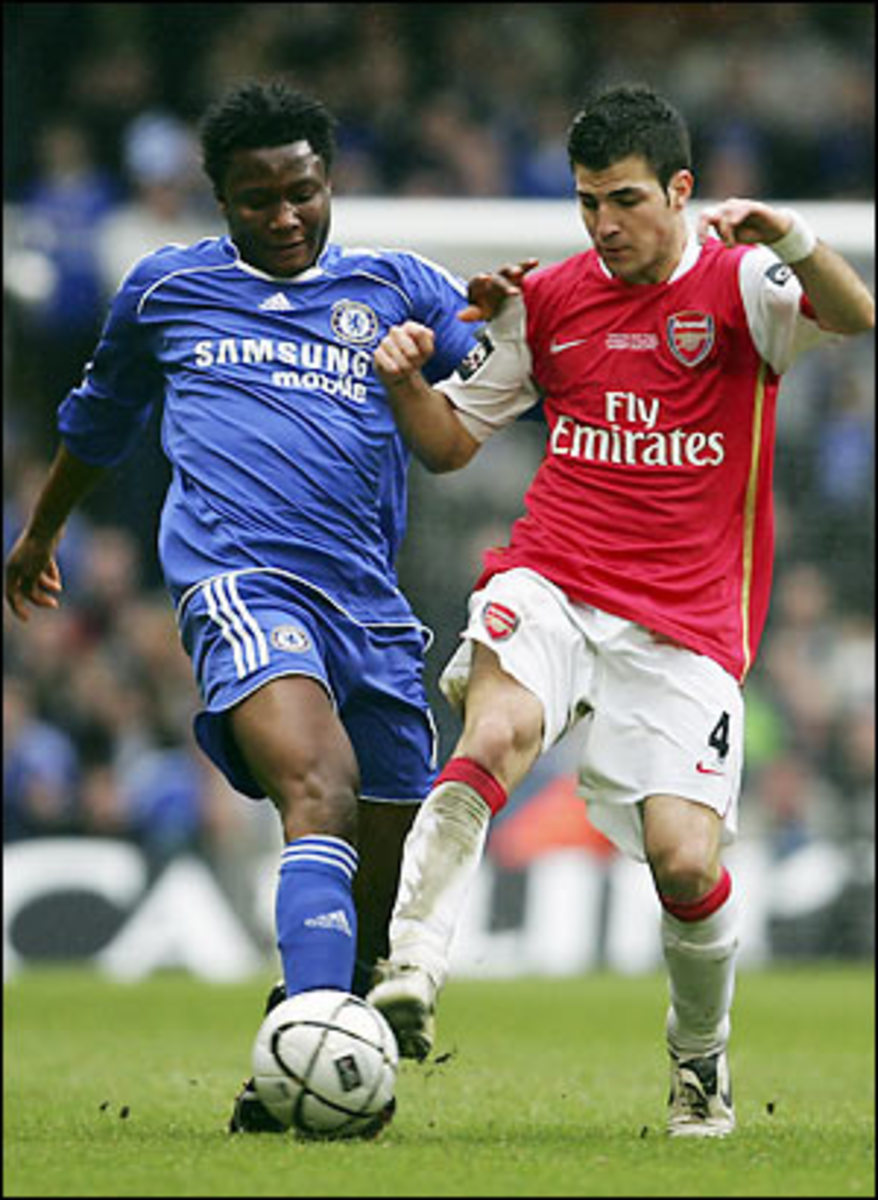
Twenty questions
But when it comes to when great players are born, one would think that it's entirely random. After all, there is no logical reason to think that this planet produced more great players in, say, 1982 than 1978? Or is there?
The thought crossed my mind as I looked at the list of players born in 1987. You could build a side that would threaten for the league title anywhere in the world. Imagine Giuseppe Rossi and Karim Benzema up front, with Samir Nasri and Lionel Messi providing the service.
Further back, John Obi Mikel guards the back four, while Cesc Fàbregas weaves his magic in midfield. And if things don't go according to plan, you can rely on Jô, Jérémy Menez, Luis Suárez, Hatem Ben Arfa, OleksanderHladky and Aaron Lennon to give you some offensive spark. Want to stiffen up the midfield? Say hello to Mark Noble and Kevin-Prince Boateng.
There might be a few issues at the back -- defenders tend to develop later than attacking players, of course. Gonzalo Castro and Royston Drenthe give you two decent attacking fullbacks, while Federico Fazio and Gerard Piqué (or Johan Djourou) patrol the middle. In goal, it's a bit of a crap shoot, but Joe Hart has already shown glimpses of what he can do (and Sergio Romero has the tools to succeed as well).
Perhaps at no time in recent history have so many 20-year-olds already carved out a spot for themselves at major clubs. Nine of the players mentioned above are already starters at Champions League clubs and, in the case of Messi and Fàbregas, they're not just regulars, they're key figures.
And there is no telling how this group will develop. Just compare them to some of the guys who finished in the top 10 in the European Footballer of the Year or Ballon d'Or voting. At 20, Francesco Totti (10th), was still two years away from his international debut. Robinho (ninth) was enduring a disappointing first season at Real Madrid.
Zlatan Ibrahimovic (seventh) was in and out of the Ajax side in his first season in Holland. Ruud van Nistelrooy (sixth) was at Den Bosch, in the Dutch second division. Andrea Pirlo was at Reggina (fifth), in the lower reaches of Serie A. Didier Drogba (fourth) was at Le Mans, in the French second division.
The guys who finished first and second -- Kaká and Cristiano Ronaldo -- were, in fact, already stars playing for big clubs (São Paulo and Manchester United, respectively), but they are the exception, not the rule.
Oh, and in case you're wondering about the two guys missing from the list, they are Fàbregas (eighth) and Messi (third), both still 20.
Admittedly, I haven't really done any comparative analysis with, say, '86 or '85. Obviously, one would assume that the "classes" get better as you go back, level off around '82 or so and then probably being their decline around '75, as age and injuries catch up. But this doesn't change the fact that this is a special group of players.
One more thing: Of the players in the Ballon d'Or top 10, just three were older than 25 (Drogba, Pirlo and van Nistelrooy). What this suggests is that the generational change has already occurred. This is very much the era of the kids, not just those mentioned above, but also their colleagues from '85, '86, '88 and even '89 (Alexandre Pato, anyone?). Maybe experience counts for less than we thought.
So, 10 years after the fact, Kevin Keegan is back at Newcastle United. You can only wish one of the nicest guys in the game good luck. But it's also worth remembering that the incessant harping about the size of the club, how wonderful the supporters are, how they deserve more and all that background chatter does nothing to help Newcastle.
Yes, St. James' Park is always full. Yes, the Toon Army is very passionate. Yes, it would be nice if the long-suffering supporters had something to celebrate. But the sooner the media stays away from the facile stereotyping and allows Keegan to get down to what truly matters -- what happens on the pitch -- the better it will be for Newcastle and anyone who cares about the club.




